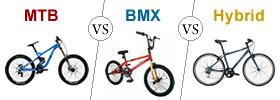Difference between Pine Wood and Plywood
Key difference: Pines are considered to be a softwood, lightweight and less expensive. Due to its lightweight, pine is quite popular for bedroom furniture, such as wardrobes, beds, as it is much easier to move this furniture around. Plywood, on the other hand, is a type of manufactured wood panel. It is made by gluing together plywood layers, also called veneers. Softwood plywood is a type of plywood created from various types of softwood. See the difference between timber and lumber.
 Pines are considered to be a softwood, lightweight and less expensive. Due to its lightweight, pine is quite popular for bedroom furniture, such as wardrobes, beds, as it is much easier to move this furniture around.
Pines are considered to be a softwood, lightweight and less expensive. Due to its lightweight, pine is quite popular for bedroom furniture, such as wardrobes, beds, as it is much easier to move this furniture around.
Softwoods generally are wood from a gymnosperm tree. A gymnosperm is a type of tree that has seed that has no covering and tends to fall to the ground. Gymnosperms reproduce by forming cones which emit pollen to be spread by the wind to other trees. Most softwood tends to come from conifers like pines, firs, and spruces. Conifers are also commonly called evergreens because their leaves tend to stay green and do not fall to the ground in cycles. Some famous softwood trees are pine, redwood, fir, cedar, and larch.
Also see: Mahogany Vs. Teak
Pine is also known to be stiff and sturdy and resistant to shock, but it does wear down over time, especially when exposed to heavy use. It has a more rustic look and tends to show off natural characteristics like knots and other flaws. Hence, it is much better for an antique look. However, pine will always be smooth to touch.
Pine is also more porous; hence it absorbs paints well. However, pine does not absorb stains evenly, so a natural look or painted look is a better option for pine.
Difference varieties of pine, include yellow pine, which may have a yellow or red color, as well as a fairly deep grain; white pine tends to be pale with a barely visible grain; and red pine, which is the darkest of the pines and has the heaviest grain. See Oak Vs. Teakwood.
 Plywood, on the other hand, is a type of manufactured wood panel. It is made by gluing together plywood layers, also called veneers. These veneers are glued together with adjacent plies having their wood grain at right angles to each other. This allows them to form a composite material. Cross-graining, i.e. having the wood grain at right angles to each other, reduces the tendency of wood to split, as well as reduces expansion and shrinkage. It also makes the strength of the panel consistent across both directions.
Plywood, on the other hand, is a type of manufactured wood panel. It is made by gluing together plywood layers, also called veneers. These veneers are glued together with adjacent plies having their wood grain at right angles to each other. This allows them to form a composite material. Cross-graining, i.e. having the wood grain at right angles to each other, reduces the tendency of wood to split, as well as reduces expansion and shrinkage. It also makes the strength of the panel consistent across both directions.
Plywood has various advantages over traditionally wood. It is flexible, inexpensive, workable and re-usable. Furthermore, it can usually be manufactured locally. Plywood is also resistant to cracking, shrinkage, splitting, twisting and/or warping. It also has a high degree of strength. All these attributes combine to make plywood one of the most widely used wood products.
Plywood is further divided into:
- Softwood plywood - Is usually made either of cedar, Douglas fir or spruce, pine, fir or redwood and is typically used for construction and industrial purposes.
- Hardwood plywood – Made from hardwood, often from birch and used for demanding end uses. Birch plywood has excellent strength, stiffness and resistance.
- Tropical plywood - Made from mixed species of tropical wood.
- Special-purpose plywood
- Aircraft plywood
- Decorative plywood (overlaid plywood)
- Flexible plywood
- Marine plywood
- fire-retardant plywood
- moisture-resistant plywood
- sign-grade plywood
- pressure-treated plywood
Also see the difference between rubberwood and hardwood
Image Courtesy: made-in-china.com, unitedplywood.in









Add new comment